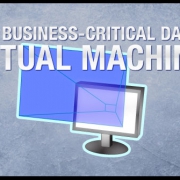A few hours of network outage is enough to leave your company shaking. We live in a hyper-connected world after all, where time is everything, and where a large number of the commercial activities are done online. Whether we are talking about sales, customer support, delivery of services, or even keeping your in-house business records up to date, you will need a reliable IT system to keep everything under control. Unfortunately, no matter how good your measures are, IT infrastructure could go down anytime, unpredictably.
IT Systems Downtime Directly Translates to Substantial Losses
According to an IHS study*, outages cost enterprises a whopping $700 billion a year. The participating companies reported at least five downtime events every month, with an average total downtime of 27 hours a month. This is a big number, with big losses. While typical mid-size companies reported an average loss of $1 million a year, the large enterprises seem to take an even harder blow, with losses of $60 million.
Downtime, irrespective of scale or duration, can impact a business negatively for it hits the business at the core, by bringing everything to a halt. The sales come to a stop, productivity of the employees is impacted negatively, and there are also potential risks of data breaches, and online backup failures during recovery.
Common Downtime Causes
Study after study has shown that causes of downtime seem to be similar in all companies. The Ponemon Institute and Emerson Network Power partnered to find the major causes behind IT downtime, and identified the four major causes:
Hardware Failure
Well, you can’t really blame anyone for this, but it holds a 33% occurrence probability. Companies invest in very expensive top-class storage systems, servers, routers etc. so as to make their infrastructure resilient. Although investing in top line equipment helps in making the system robust, it could fail at anytime.
UPS Battery Failure
When the power is out, Uninterrupted Power Supply (UPS) is the only backup support in most businesses. However, when even that fails then it can bring the business to its knees. Unfortunately, it was the cited reason for about 55% of the outages.
Weather Conditions
Bad weather — hurricane, floods, earthquakes, and more — can also damage your hardware and is accounted for about 30% of downtime.
Employee Mistakes
Surprisingly, employees themselves account for about 48% of the total outages. In most cases, the mistakes are petty to say the least. For instance, it just takes one malicious program download to infect the entire system. Accidental deletion of databases is also another common reason behind the outages.
How to Develop a Good Business Continuity Plan?
Remember that downtime affects everyone. No one is immune to it. It is just a matter of “when” the downtime takes place, not “if”. The first thing that you must do is to start using a cloud backup service, such as provided by the leading company like, Data Deposit Box. If your data is backed up and protected, you can get your system up and running within minutes after a disaster.
Another important aspect of your business continuity plan should be network monitoring. With a modern network monitoring software, you can detect vulnerabilities in your IT infrastructure before it leads to major problems. It can also help detect data breaches or degrading health of an IT equipment.
======
* — https://goo.gl/JunW6V









Leave a Reply
Want to join the discussion?Feel free to contribute!